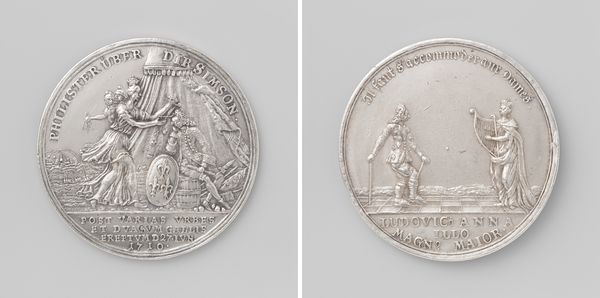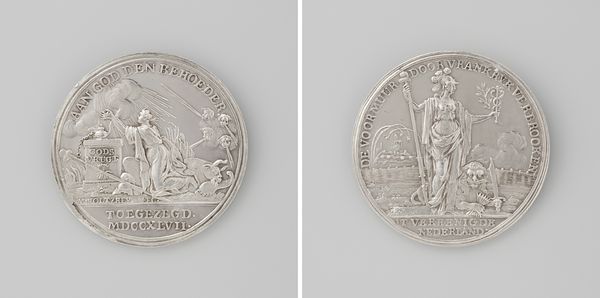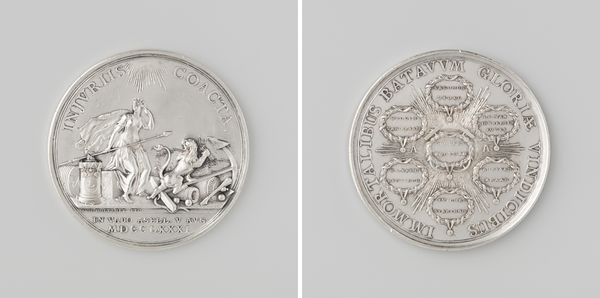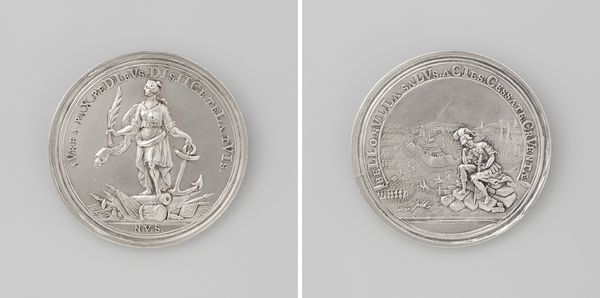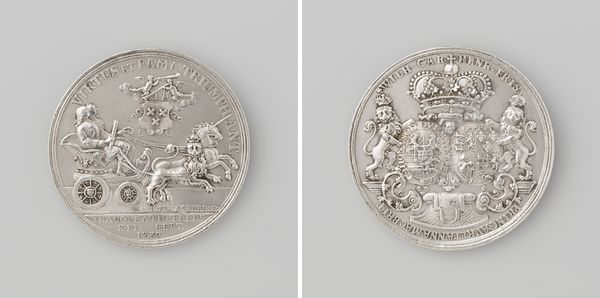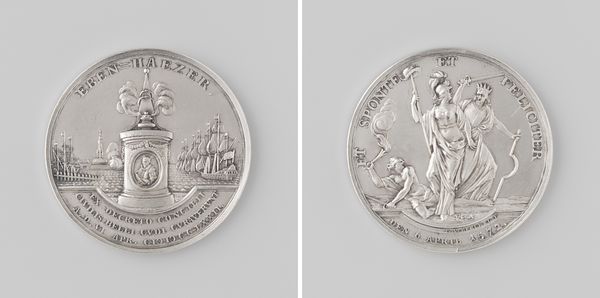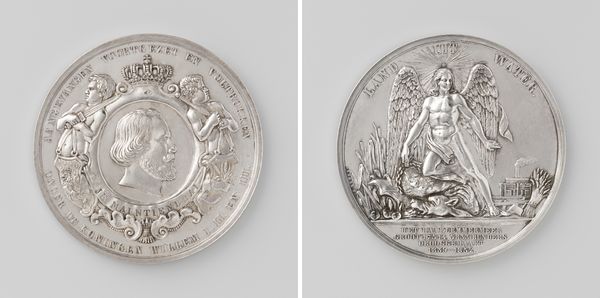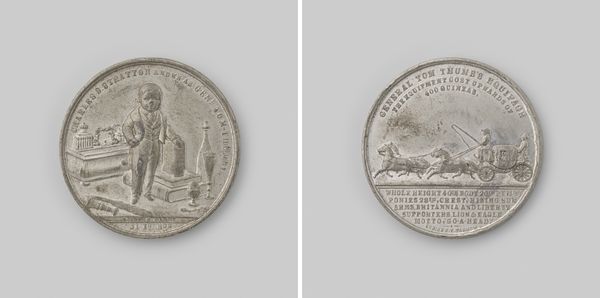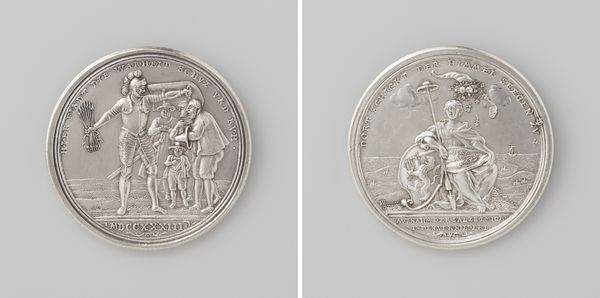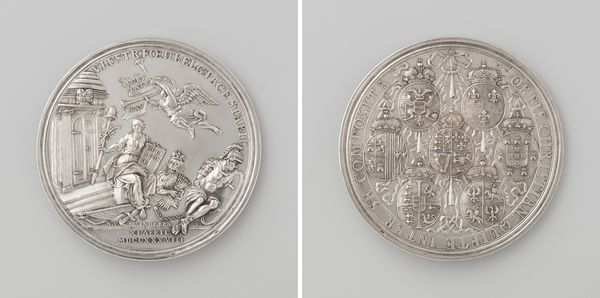
metal, sculpture, engraving
#
portrait
#
allegory
#
baroque
#
metal
#
sculpture
#
history-painting
#
engraving
#
realism
Dimensions: diameter 3.3 cm, weight 14.75 gr
Copyright: Rijks Museum: Open Domain
Curator: This metalwork from 1714, entitled "Vrede te Utrecht gesloten tussen Spanje en de Republiek," or "Peace of Utrecht Concluded Between Spain and the Republic" by Daniel Drappentier, is certainly captivating. My first impression? It feels like a whisper of a grand historical moment captured in miniature. Editor: Indeed. The engraving on this piece gives it such remarkable detail, doesn't it? Look at the way light and shadow play across the allegorical figure seated on the left side of one face. Given the title, it's hard not to immediately see it as a claim about Dutch-Spanish power dynamics, and broader conversations around colonialism. Curator: Exactly. The choice of allegory is crucial here. She's not just any figure, but a symbolic embodiment of peace. The placement of the heraldic shield, cannons and sailing ship all give the symbol weight and context in understanding both Dutch ambition and, perhaps, the cost of peace itself. What do you see in its composition? Editor: It is a striking combination. I appreciate the two sides, particularly in how they play against each other with similar elements. For example, you have an allegorical representation of power on one face while, on the opposite, an overt expression of hopeful imagery with the dove and celebratory language that circles it. It brings an important structural contrast between how it presents what each nation state thinks of its place and the resulting relationship of power. Curator: And the choice of metal is no accident. Metal's durability echoes the desire for lasting peace. The choice of Baroque and Realist styles also reinforces its authority through hyper-detailed accuracy alongside stylized figures. And think about Utrecht itself—as a physical site, as a concept of achieving concord. Editor: Considering Drappentier's position in contemporary society, one also must examine what this "peace" would mean, and to whom. Peace might mean something very different for the colonizer versus those under colonial control. What might that have meant for the subjects under Spanish rule? Curator: Precisely! It becomes more than a celebration of peace. It urges us to ask crucial questions about the social costs that get masked within notions like peace, especially considering its history of inequality between colonial power. Editor: Absolutely. It seems a testament to formal artistry alongside a critical lens to prompt interrogation rather than simple acceptance. Curator: Thank you for drawing this out into such nuance; It adds dimensions of a historic piece that makes it far more resonant for the current viewer.
Comments
No comments
Be the first to comment and join the conversation on the ultimate creative platform.
